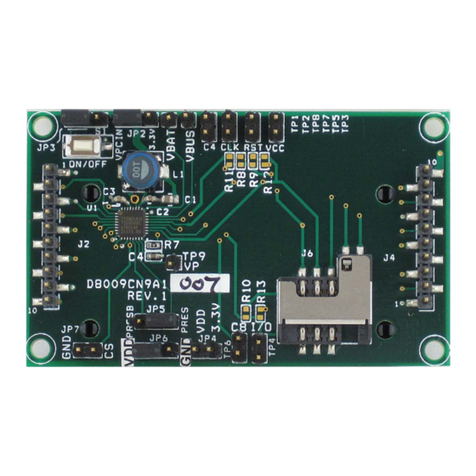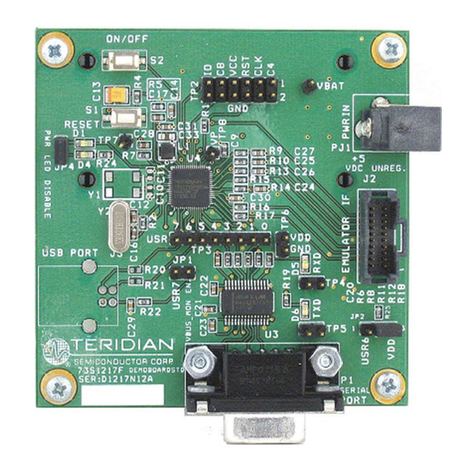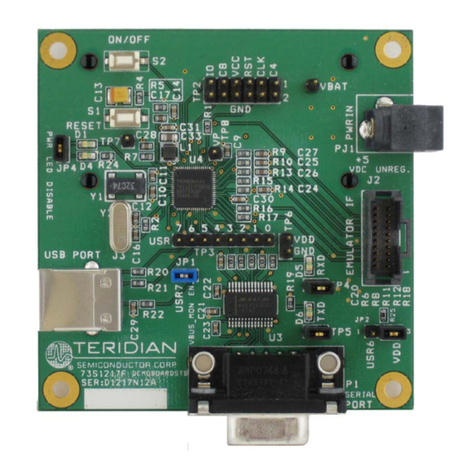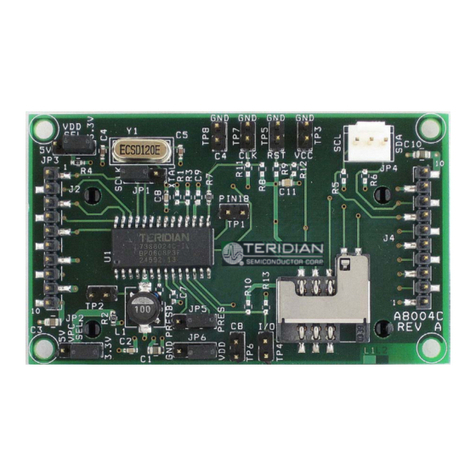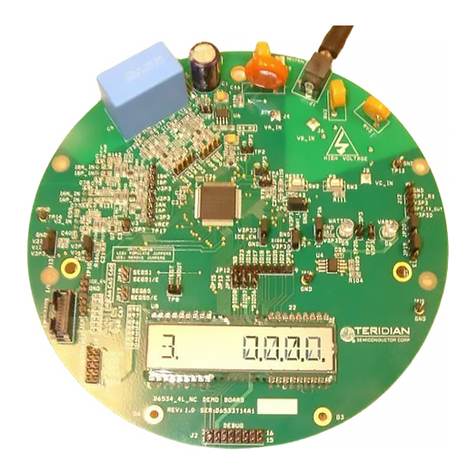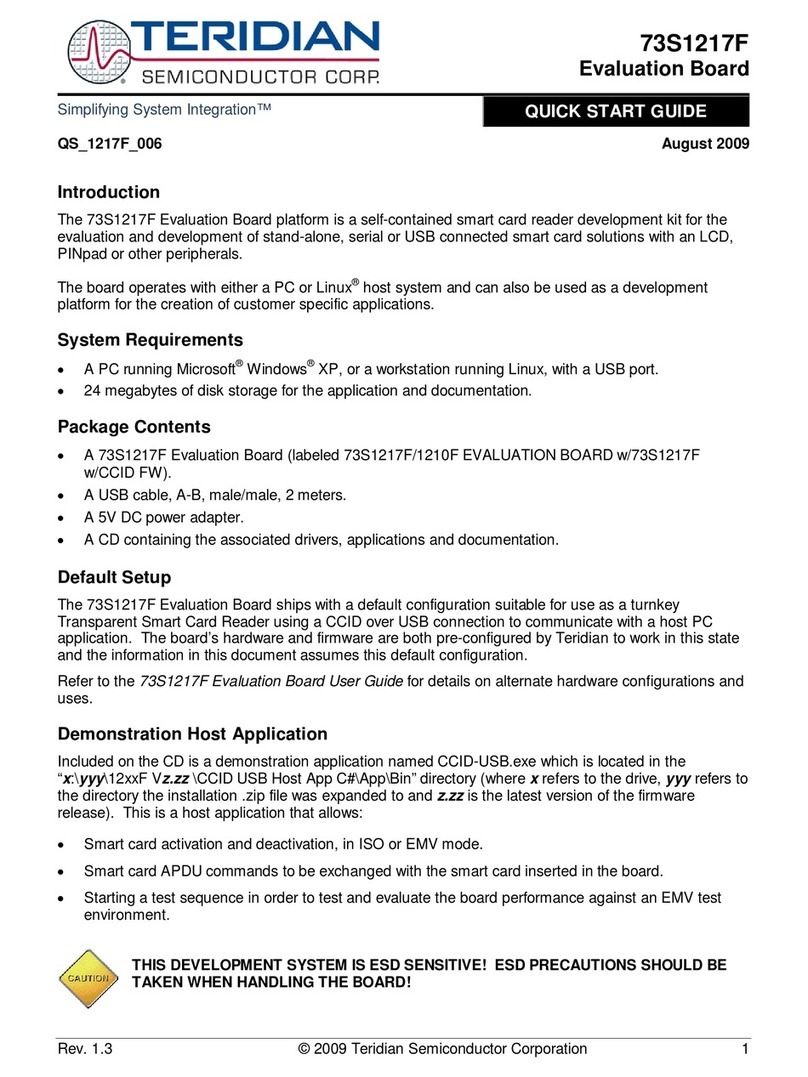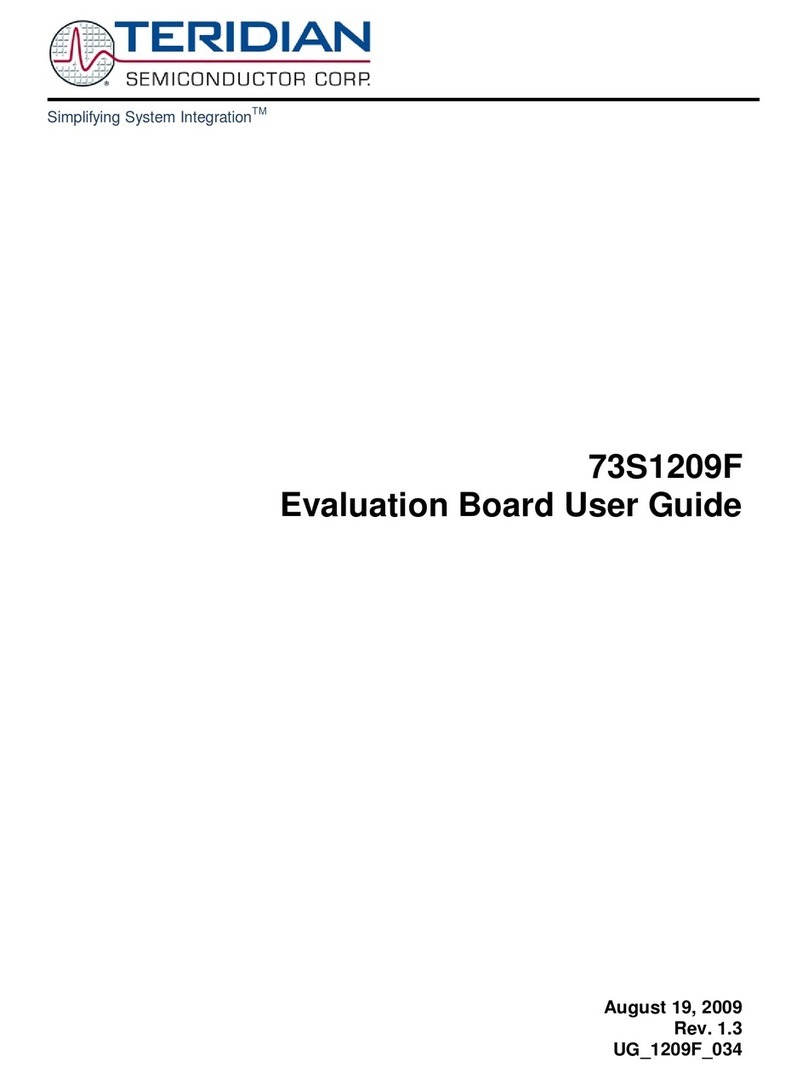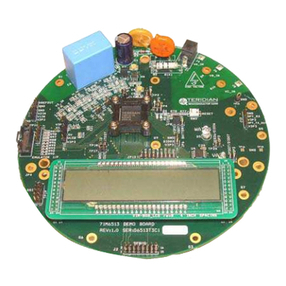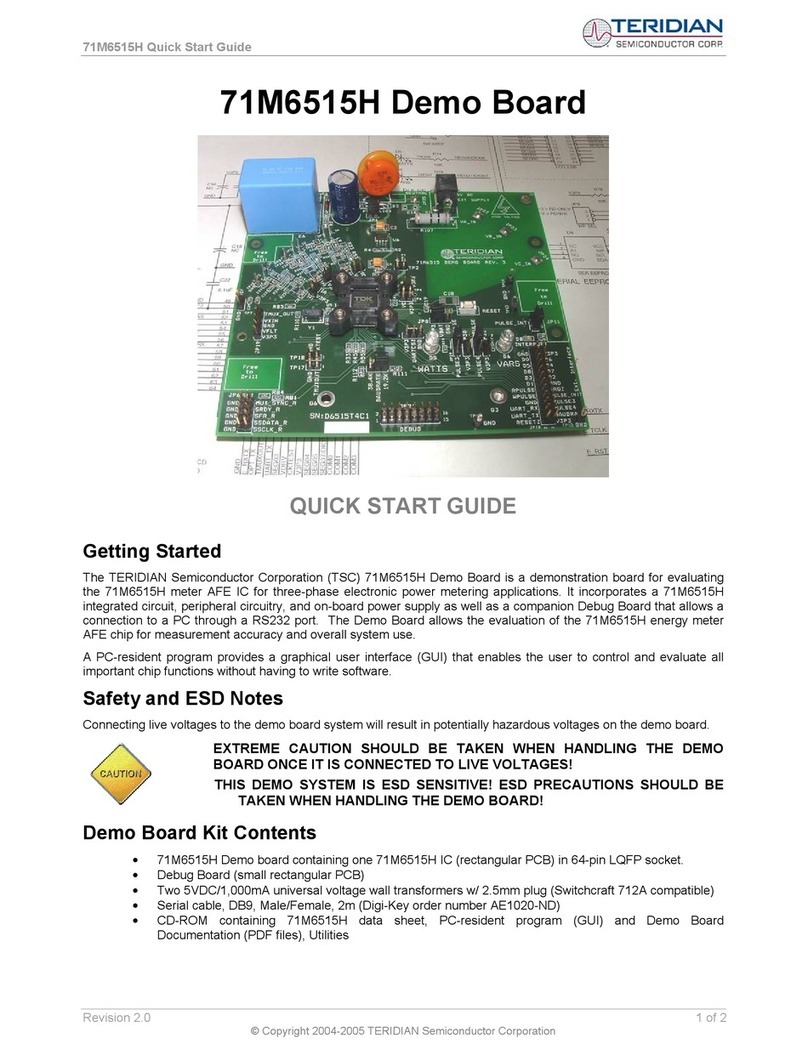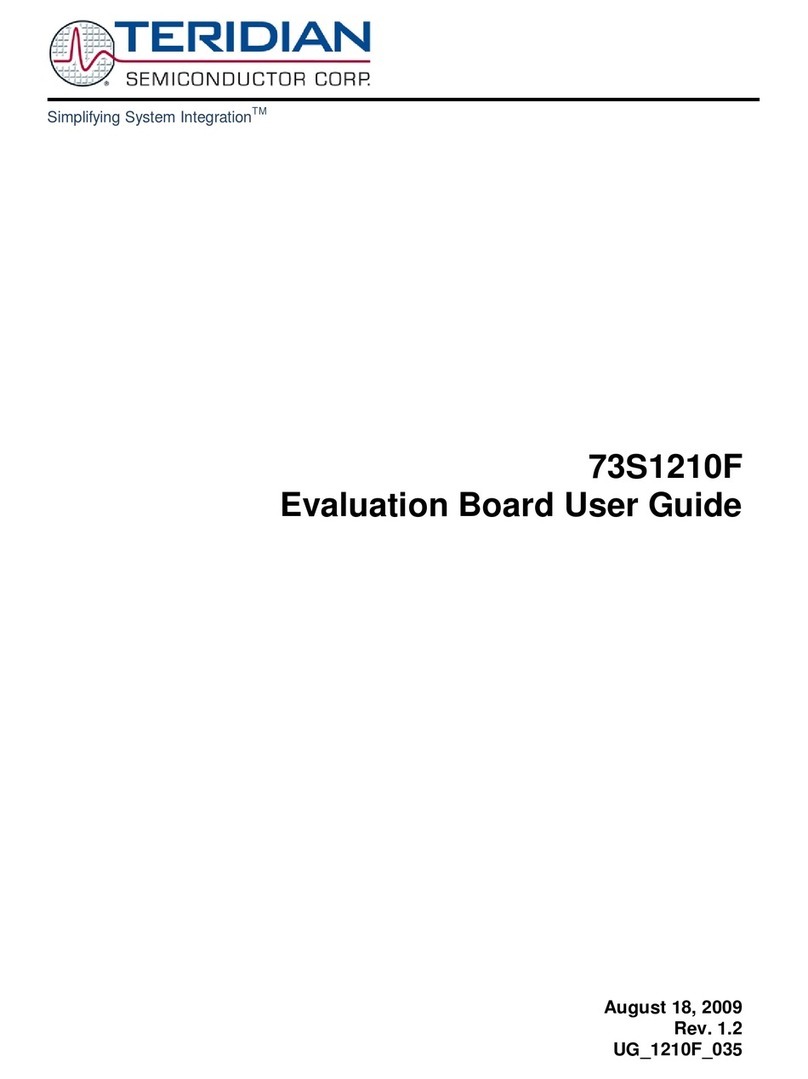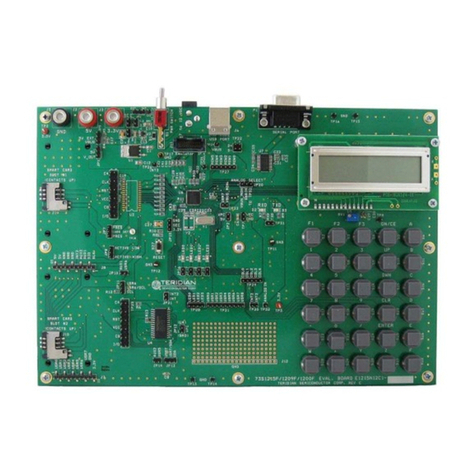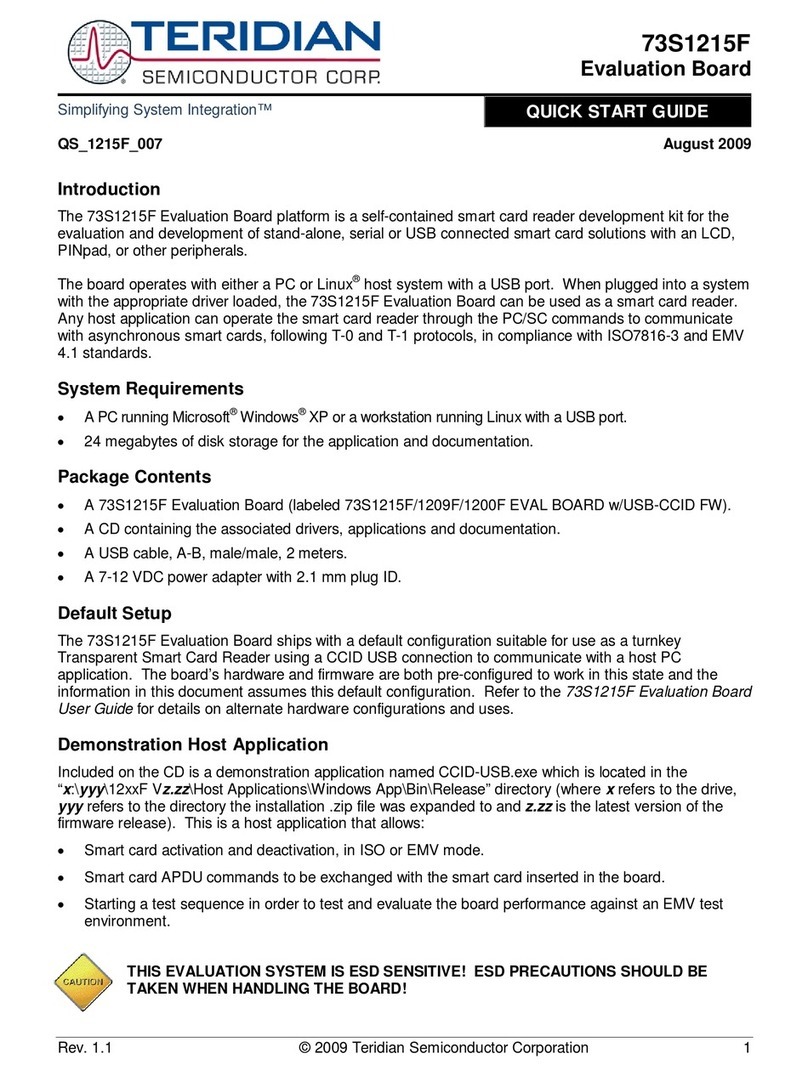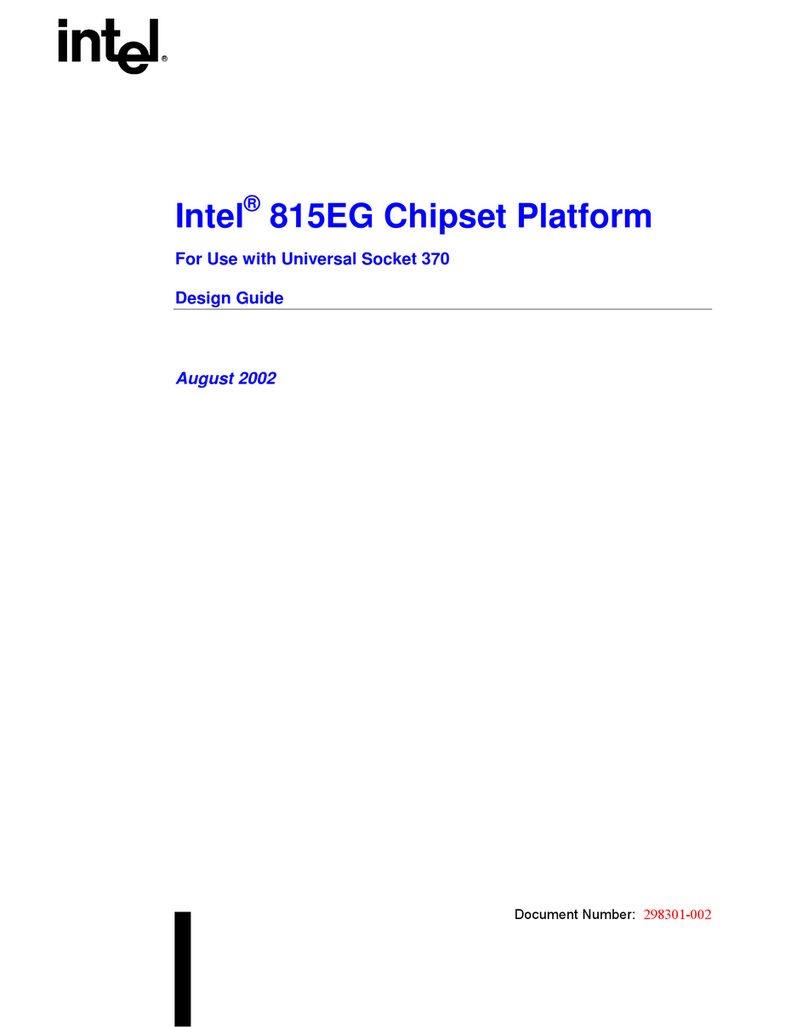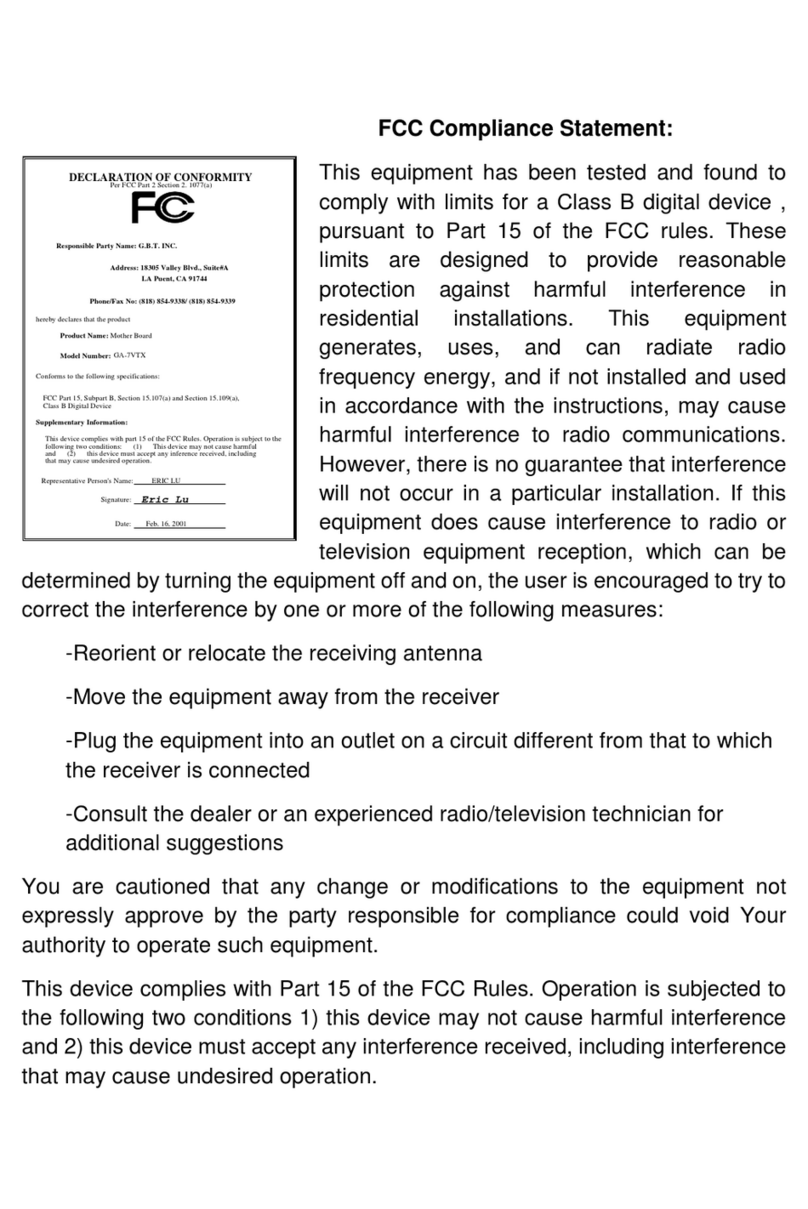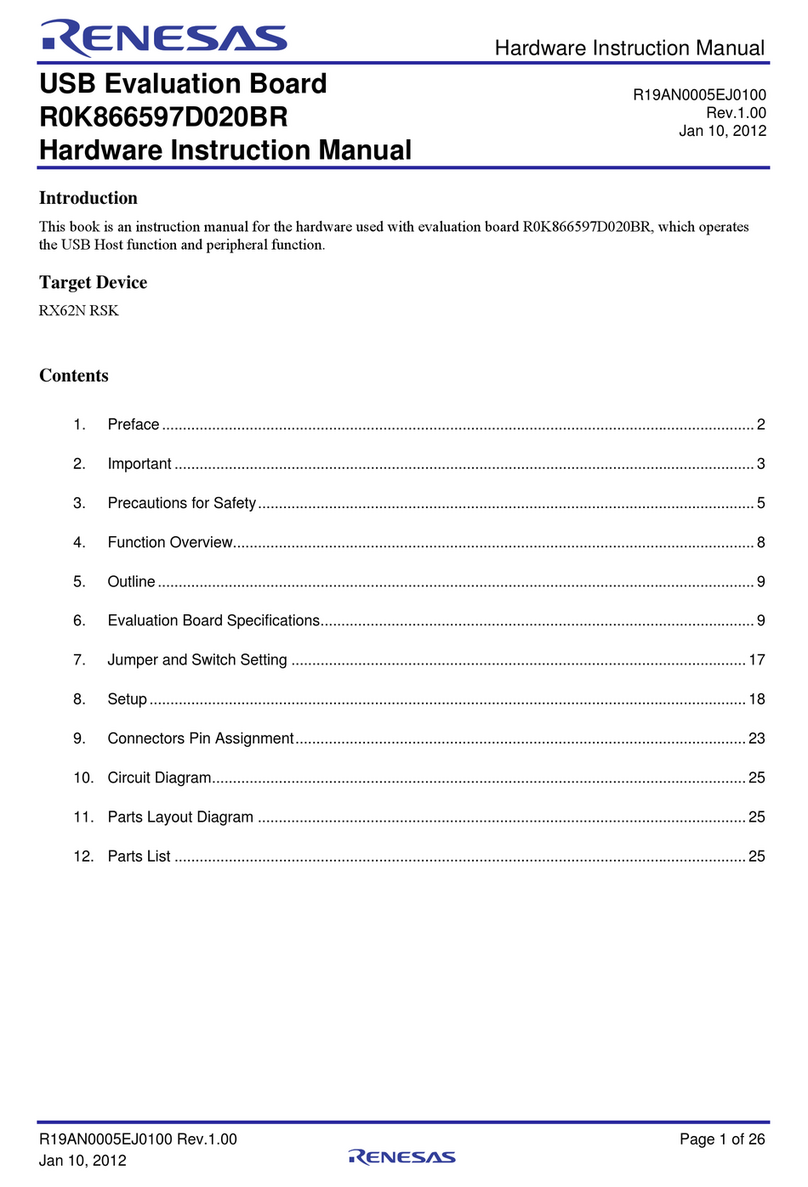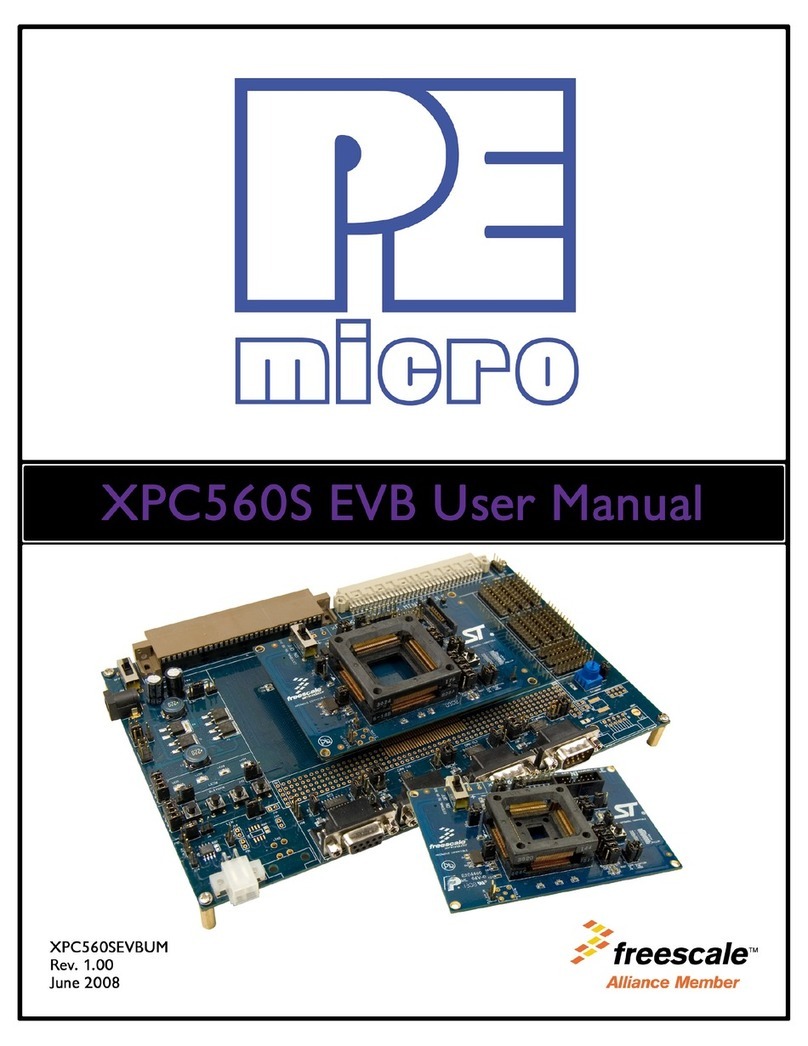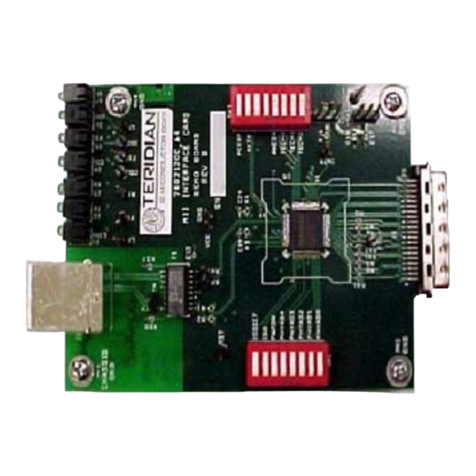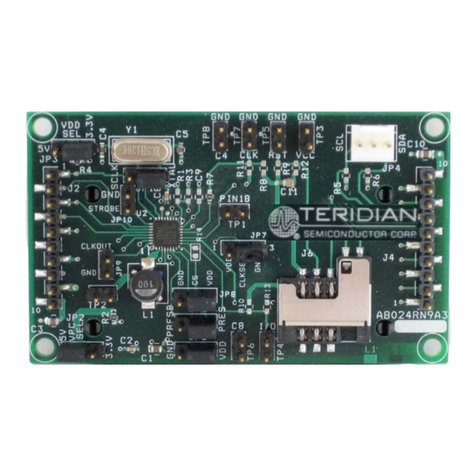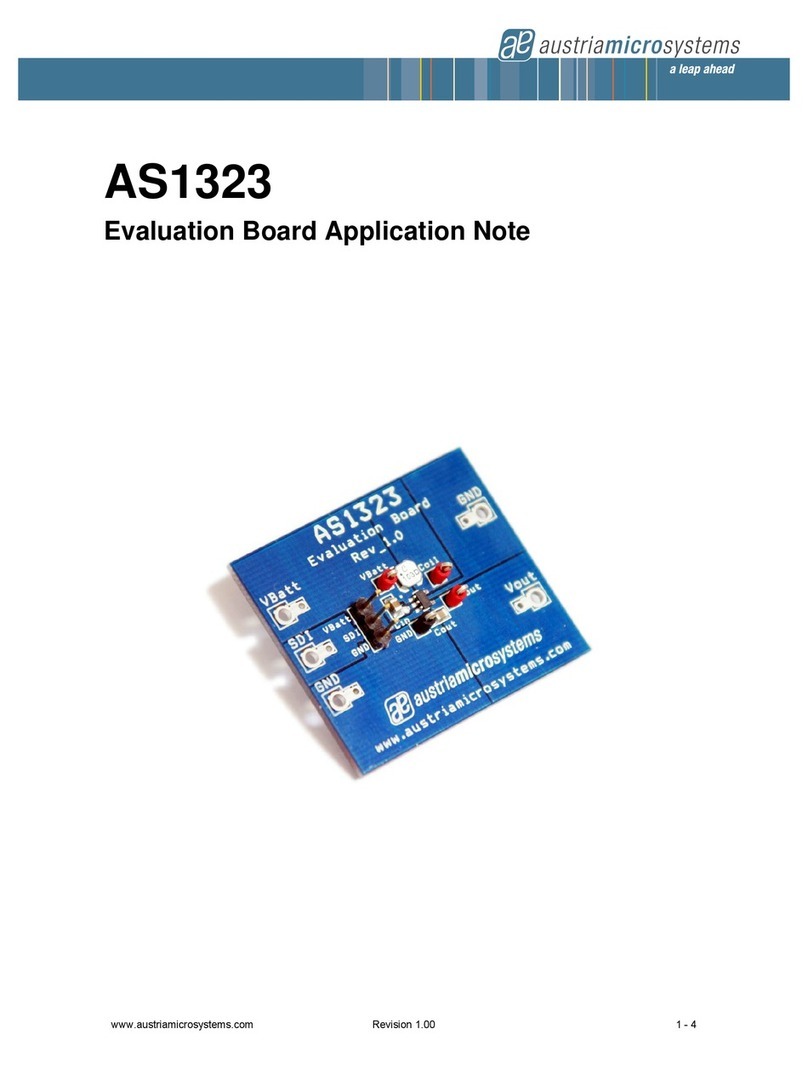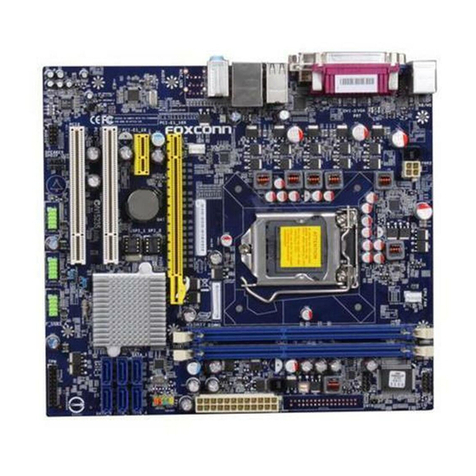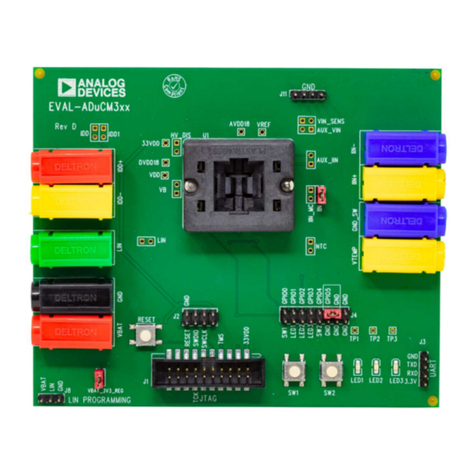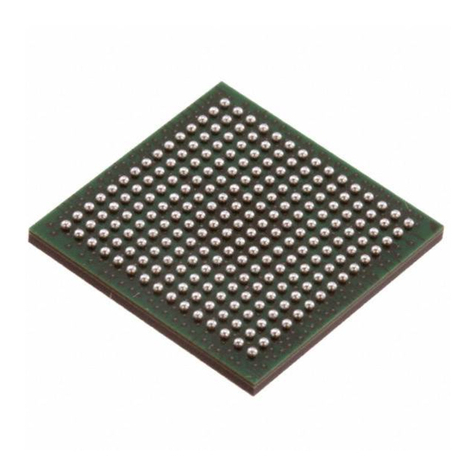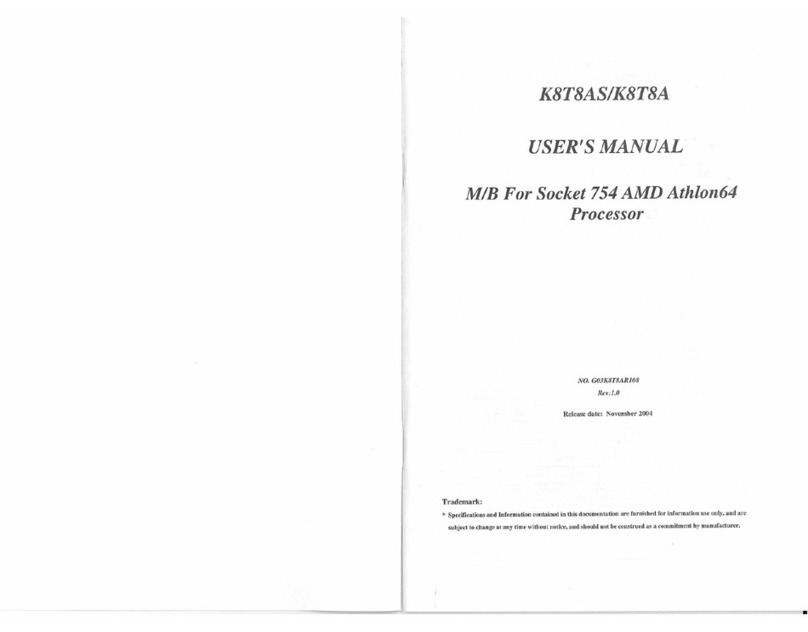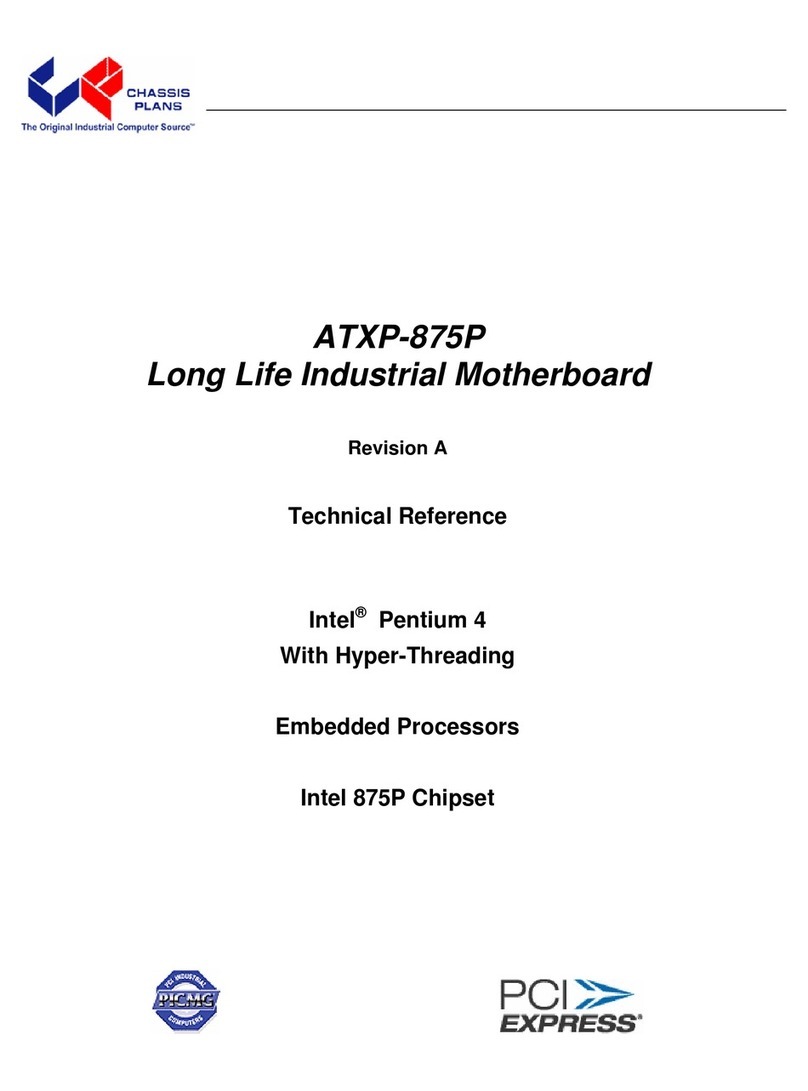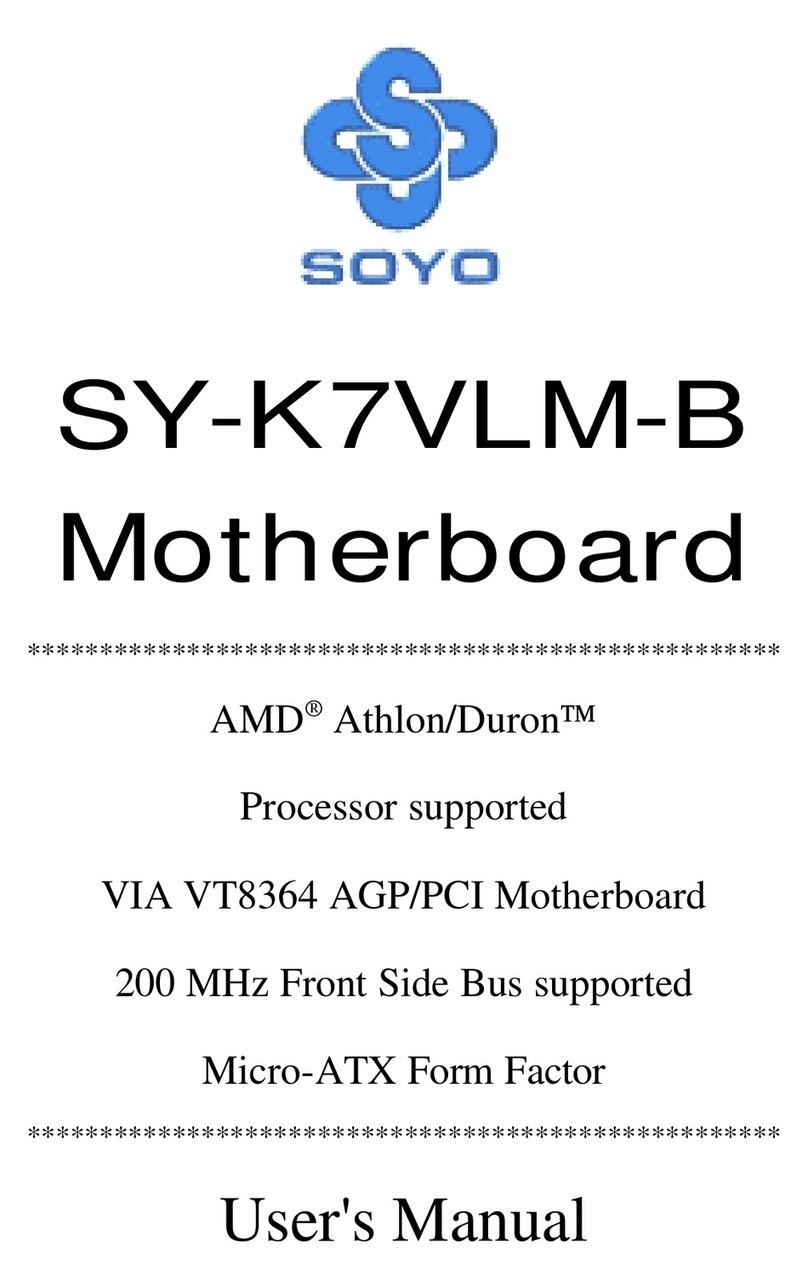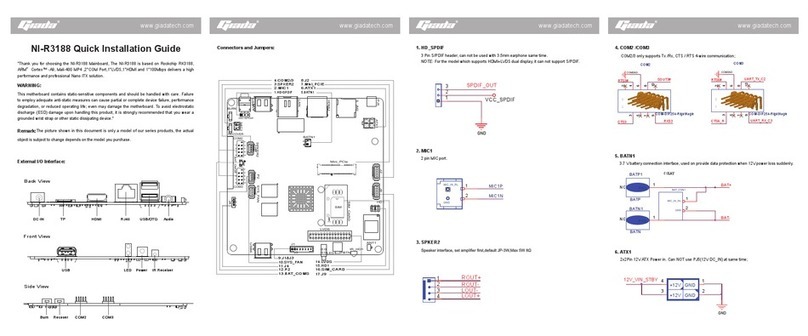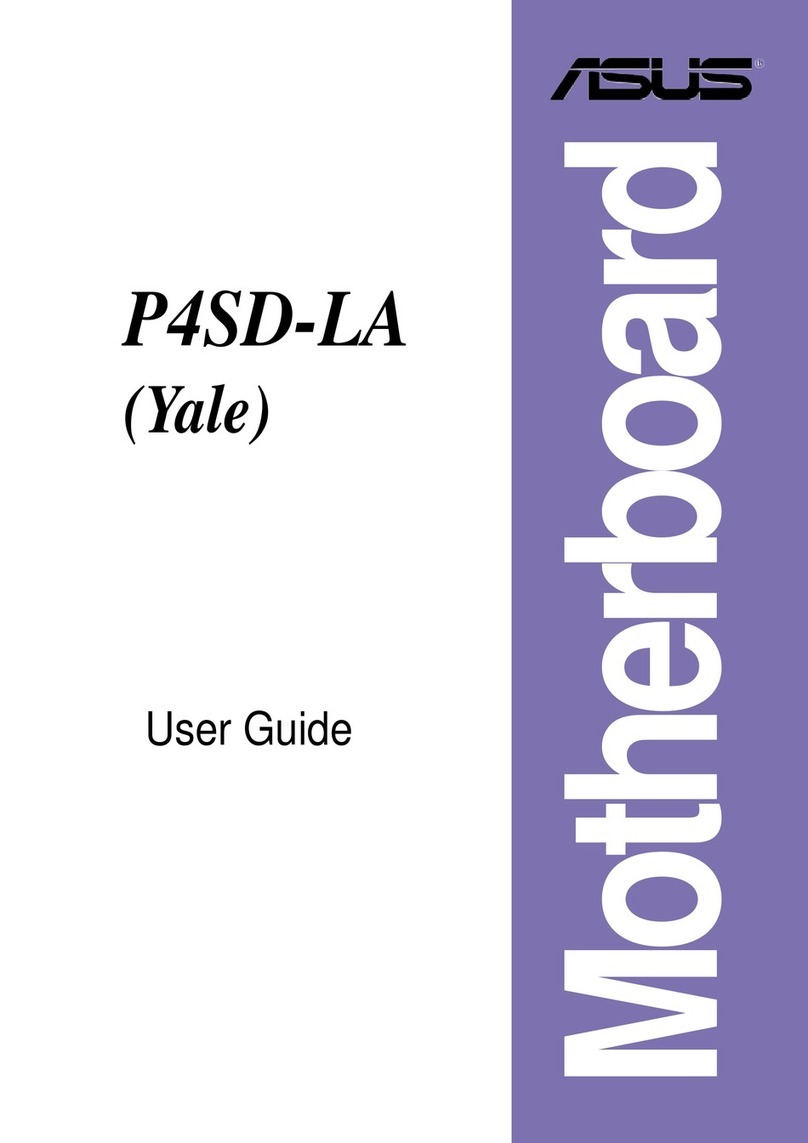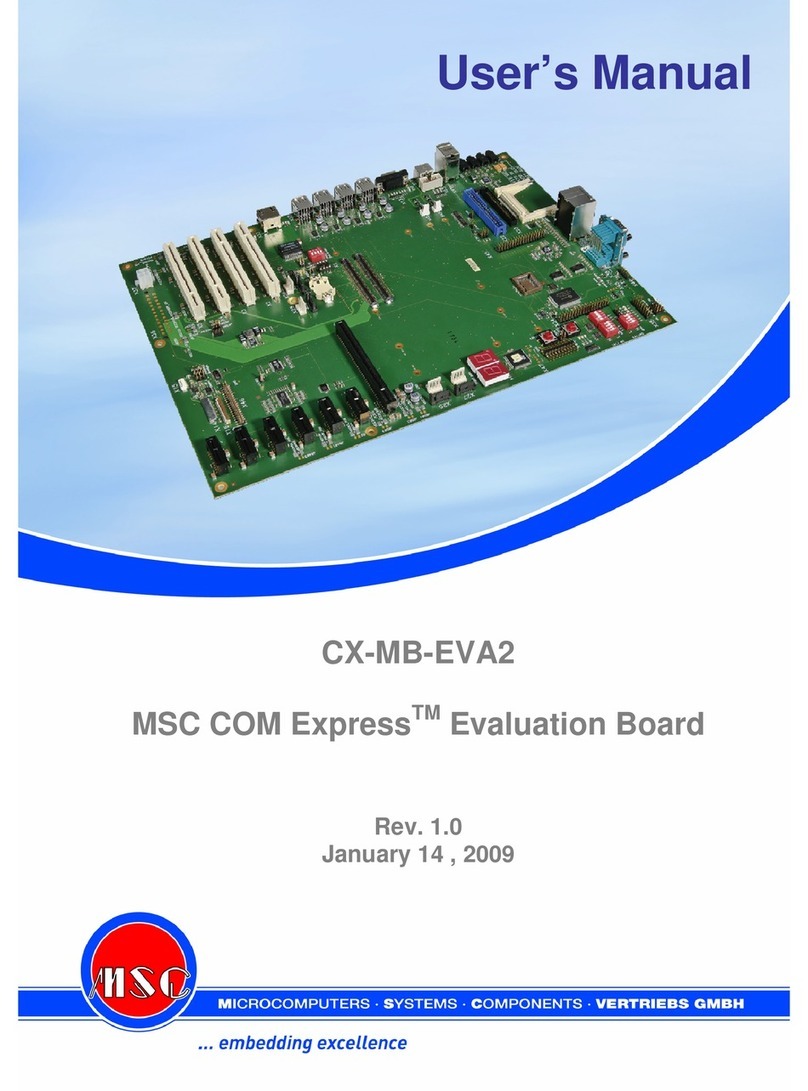
73S1215F Evaluation Board Lite User Guide UG_1215F_045
12 Rev. 1.1
Q: The Teridian Smart Reader is nowhere to be found on the Device Manager menu and there is an
“unknown USB device” found where the Teridian Development Board should be.
A: This usually means the development board is properly powered up but there is no enumeration taking
place. If the development board is connected to a USB HUB, remove the HUB and connect the board
directly to the PC USB port, or move it to a different USB port on the system. If the problem persists
and it is absolutely sure that the development board is properly powered up, it is possible that there is
no firmware in the part. Contact a Teridian sales representative for reprogramming of the Flash.
Q: The Teridian driver is loaded. What to do to replace it with the Microsoft Generic USB CCID driver?
A: Right click on the Teridian driver in the Device Manager Menu, select “Update Driver..”. Select “No,
Not this time” on the next menu, “Install from a list or specific location”, “Don’t Search, I will choose the
driver to install”. If the next menu does not show the Microsoft Generic USB CCID driver, select
“Have Disk” and browse to where the driver file resides (usually in the “CCID USB XPDriver” folder)
and select the file. Follow through with the installation wizard.
Linux
Q: How can I see debug messages from PCSC-Lite when I run pcscd from the command line?
A: Before invoking pcscd, open the file /usr/local/pcsc/drivers/ifd-ccid.bundle/Contents/Info.plist in an
editor, and set ifdLogLevel to 7. Save the change. Then run the command “pcscd –f –d” in a console.
Now pcscd runs in foreground and should display many messages in the console. These messages
show information about the smart card readers that have been detected, and whether or not a smart
card is present in the reader. Also shown in the messages are the data exchanges between the host
(Linux) and the smart card reader. The most important messages are the error messages that pcscd
displays when a critical error has occurred. If less messages are desired, set IfdLogLevel to 3 or 1.
Q: When I run the command “pcscd –f –d”, I get an error message that says “file /var/run/pcscd.pub
already exists. Another pcscd seems to be running”.
A: Only one instance of pcscd (PCSC-Lite Daemon) should be running at any time. If you receive this
error message when invoking thepcscd program, pcscd is probably currently running already. If your
intention is to restart pcscd, first terminate the pcscdthat is currently running. You can run the
command “ps aux | grep pcscd” to obtain the PID (Process ID) of the current pcscd. For example, you
may see output similar to the following:
[root@localhost ~]# ps aux | grep pcscd
root3380 0.1 0.0 74588 1752 pts/2 Sl+ 16:06 0:02 pcscd –f –d
[root@localhost ~]#
The PID of pcscd in this case is 3380. Next run the command “kill 3380” to stop the currently running
pcscd. Then start pcscd again by entering the command “pcscd –f –d”.
Q: When I start the program pcsc_scan, I receive an error message saying “PCSC Not Running”.
A: The pcsc_scan program requires the services provided by pcscd. Hence the PCSC-Lite daemon
pcscdshould be already running before pcsc_scan can start. Run pcscd first, and then invoke
pcsc_scan.





















